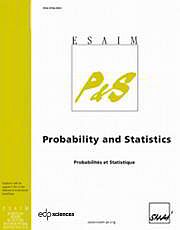Article contents
Variable selection through CART∗
Published online by Cambridge University Press: 22 October 2014
Abstract
This paper deals with variable selection in regression and binary classificationframeworks. It proposes an automatic and exhaustive procedure which relies on the use ofthe CART algorithm and on model selection via penalization. This work, of theoreticalnature, aims at determining adequate penalties, i.e. penalties whichallow achievement of oracle type inequalities justifying the performance of the proposedprocedure. Since the exhaustive procedure cannot be realized when the number of variablesis too large, a more practical procedure is also proposed and still theoreticallyvalidated. A simulation study completes the theoretical results.
- Type
- Research Article
- Information
- Copyright
- © EDP Sciences, SMAI 2014
References
- 1
- Cited by


